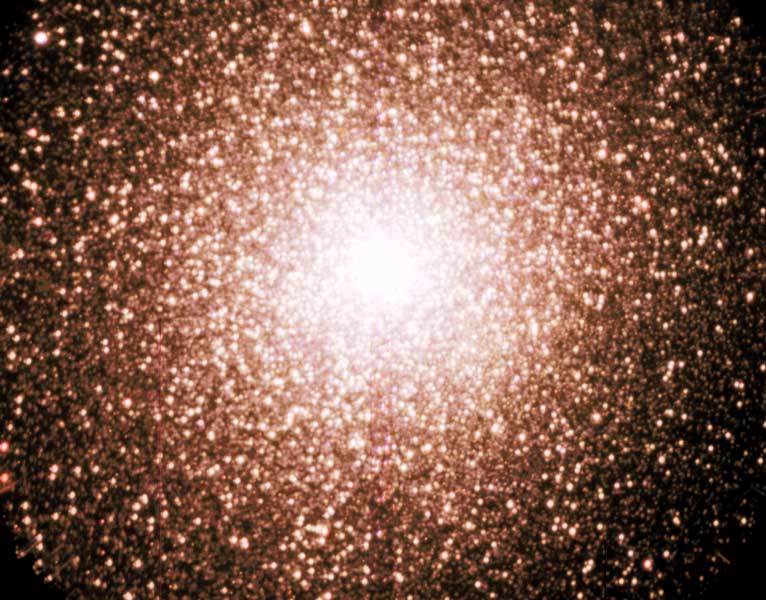Credit & Copyright: South African Astronomical Observatory
Explanation:
Stars come in bunches.
Of the over 200
globular star clusters
that orbit the center of our
Milky Way Galaxy,
47 Tucanae is the second brightest globular cluster, behind
Omega Centauri.
Known to some affectionately as 47 Tuc or NGC 104,
it is only visible from Earth's
Southern Hemisphere.
It was therefore a fitting target for
first light observations of the gigantic new 10-meter diameter
Southern African Large Telescope (SALT) this past week.
The resulting image is
shown above.
Light takes about 20,000 years to reach us from
47 Tuc which can be seen near the
Small Magellanic Cloud toward the
constellation of Tucana.
The dynamics of stars near the center of
47 Tuc are not well understood, particularly why there are so few
binary systems there.
1999 2000 2001 2002 2003 2004 2005 2006 2007 2008 2009 2010 2011 2012 2013 2014 2015 2016 2017 2018 2019 2020 2021 2022 2023 2024 2025 |
Январь Февраль Март Апрель Май Июнь Июль Август Сентябрь Октябрь Ноябрь Декабрь |
NASA Web Site Statements, Warnings, and Disclaimers
NASA Official: Jay Norris. Specific rights apply.
A service of: LHEA at NASA / GSFC
& Michigan Tech. U.
|
Публикации с ключевыми словами:
globular cluster - 47 Tuc - 47 Тукана - Шаровое скопление
Публикации со словами: globular cluster - 47 Tuc - 47 Тукана - Шаровое скопление | |
См. также:
Все публикации на ту же тему >> | |
Мнение читателя [1]
